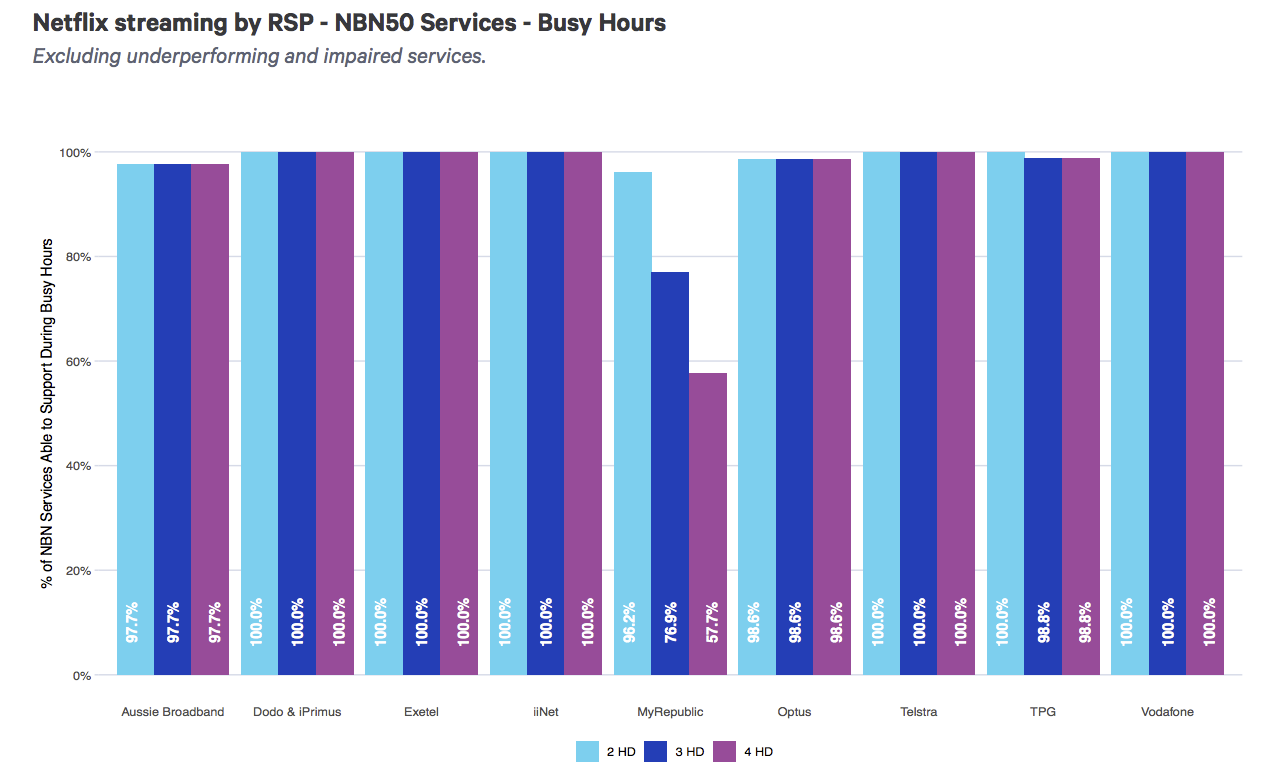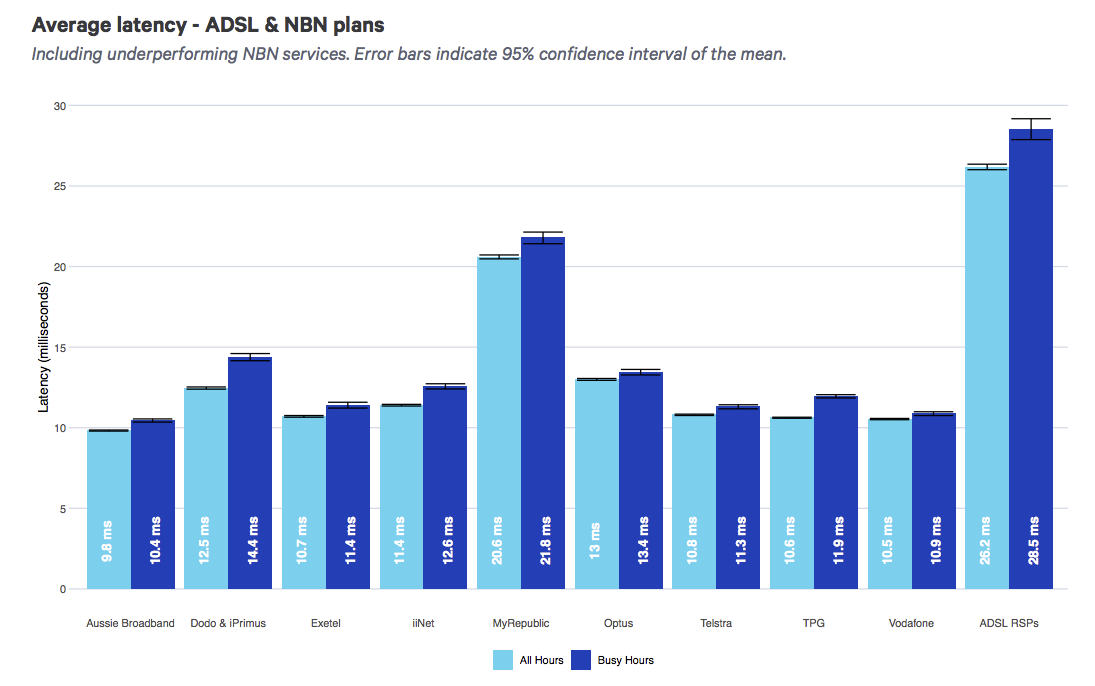The Australian Competition & Consumer Commission (ACCC) has today released its tenth quarterly performance report on the NBN, carrying on its plan to provide broadband customers an accurate idea of how different providers and technologies are performing over time.
The latest report collates data from a 30-day period spanning May 22 until June 20, 2020 – the first the ACCC has released that includes data during the Covid period of increased demand, from Australian residents working, schooling and generally spending more time at home.
The good news
Apart from one outlier RSP and the specific tests that it underperformed in (more on that below), most NBN providers are coping admirably during the increased load that they’ve been met with due to Covid and the resulting surge in demand it brought about.
The average download speed of all providers during the busy hours (7-11pm) fell between 82.8% and 90% of the maximum plan speed, while the bracket for the busiest hour from that window was between 78% and 88.4%.
Compared to the previous reporting figures, every single provider managed to bump their performance up in the busy hour download average test, while only Dodo and iPrimus dipped (by 1%) in the busiest hour metric.
Every NBN speed tier (as well as ADSL) saw an increase since last quarter to its overall average download speed as well, with NBN100 jumping from 84.5Mbps to 88.0Mbps and NBN50 rising slightly from 42.6Mbps to 43.3Mbps.
As far as the variance in average speed between different technologies, the story has remained rather similar since the last report. For both NBN50 and NBN100 plans, FttP (Fibre-to-the-Premises) and HFC (Hybrid Fibre Coaxial) connections provide around 92% of the maximum speeds they promise, while FttN (Fibre-to-the-Node) only manages about 82%.
The outlier
While most Retail Service Providers (RSPs) performed fairly similarly when comparing average speeds across different tiers, one provider, MyRepublic, did struggle to keep up in a handful tests.
When watching Netflix during busy peak hours, for example, the company's NBN50 plans had difficultly maintaining the necessary speeds to support three or more simultaneous streams, as shown in the ACCC’s chart below.

While all the other measured RSPs had almost 100% of their NBN services capable of handling two, three, or four HD Netflix streams, MyRepublic’s capacity dropped significantly with the introduction of each new Netflix instance beyond two.
Another hurdle the provider didn’t clear was the average latency of its broadband services during both regular and busy hours. While most RSPs were able to keep latency within 10-13ms for the most part, MyRepublic almost doubled this at 20.6ms during normal hours and 21.8ms during busy hours.

Latency is a significant factor for activities that require user feedback – most notably video conferencing and online gaming – but as pointed out by the ACCC, “latency at even 30ms would have a detrimental effect on only the most latency-sensitive applications.”
In other words, while the comparative performance may look bad, the impact on real-world use is likely to be limited.
MyRepublic did have one of the lowest occurrences of average daily outages across the board, however it’s worth noting that the outages the RSP did face were more likely to last longer (it had the highest proportion of outages lasting 10 minutes or more) suggesting higher resilience overall but a much slower recovery.
For further info, visit ACCC's page to see graphics depicting the latest broadband performance findings.
The best NBN250 plans on offer
from TechRadar - All the latest technology news https://ift.tt/30fv8l7
No comments:
Post a Comment